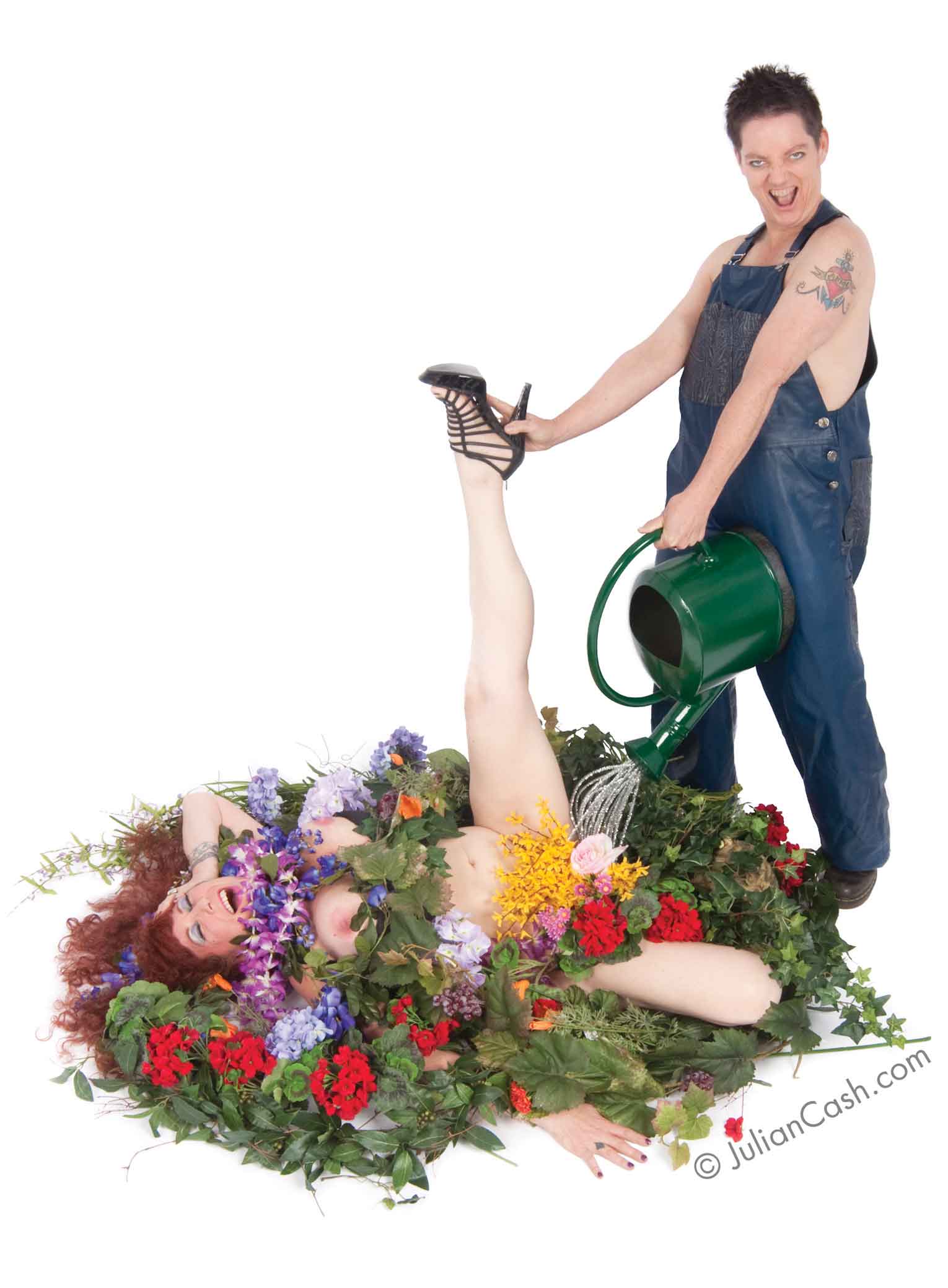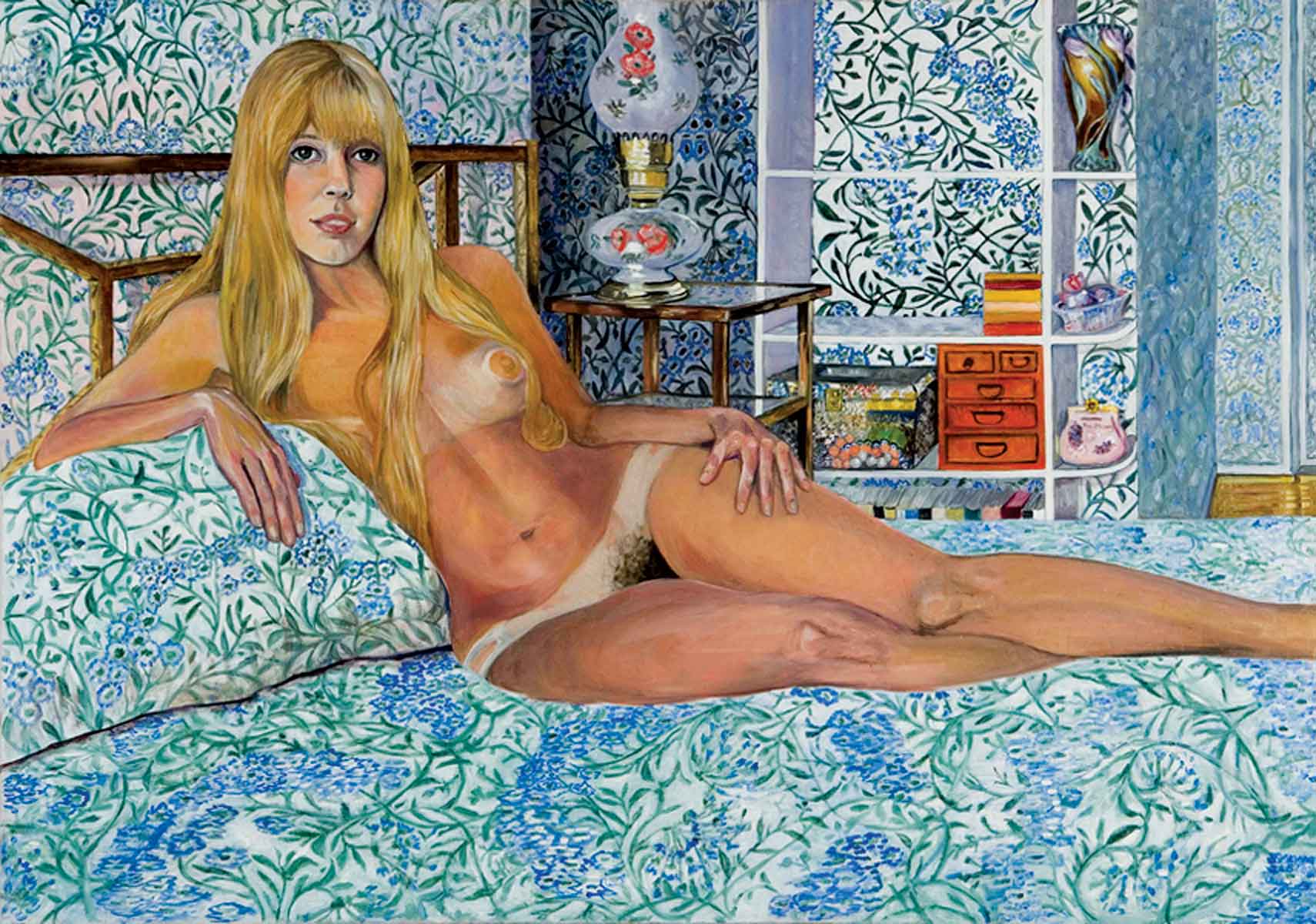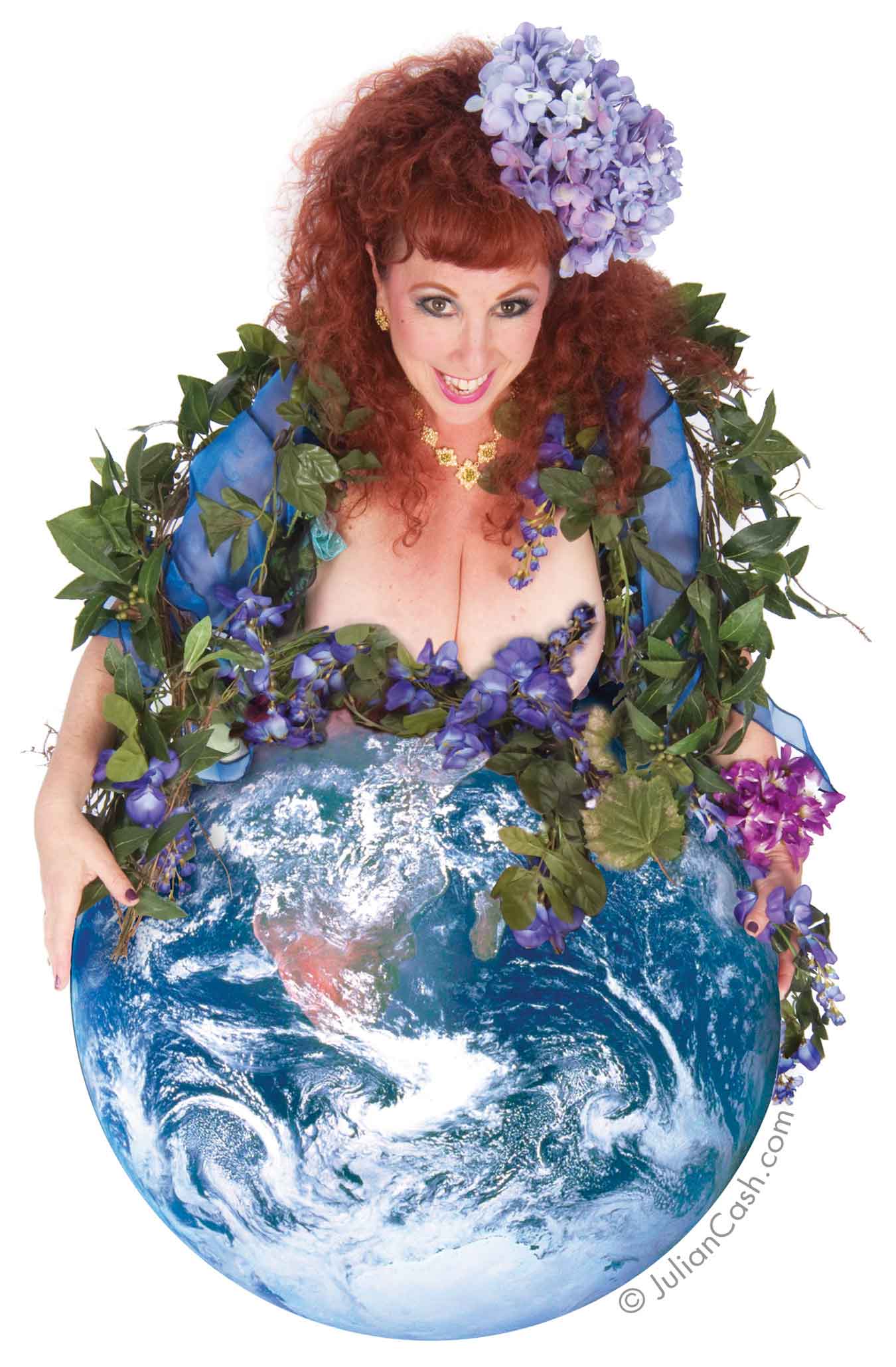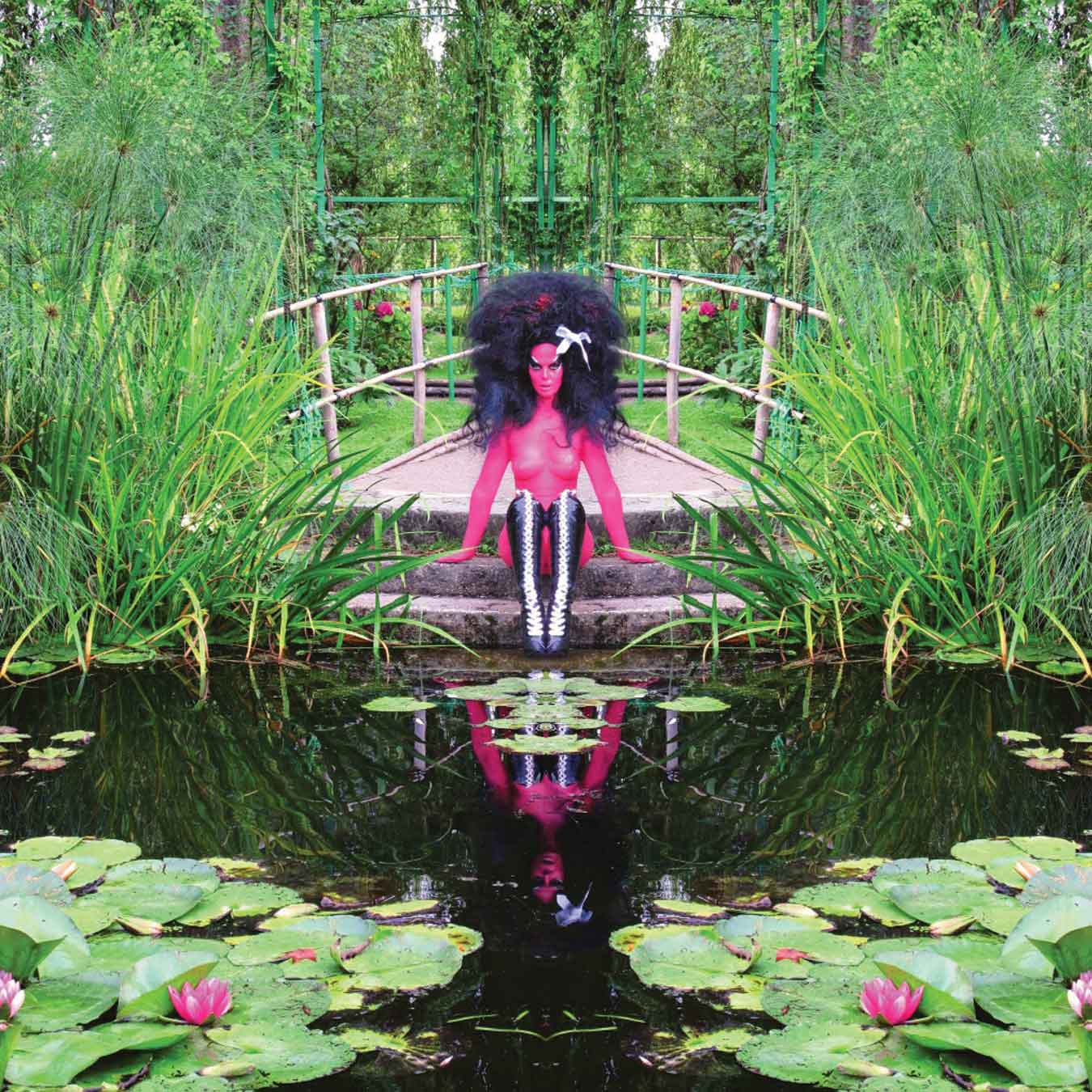« Features
Pro-Sex Feminist Art in the Age of the War on Women. Artists Using Pornography As Source
By Anne Swartz
Some feminist artists have used pornography as source material and made it a central part of their works. Such artists as Sylvia Sleigh, Annie Sprinkle, Lisa Yuskavage and E.V. Day have considered and engaged pornography as a liberating force in their works. Indeed, there is an appetite for images of sex and pornography in art and popular culture-there is no denying it; but against the current political backdrop, it is provocative. What these women artists do differently is use the conventions of porn-we imagine the women are looking at us and only us-but do so without diminishing the sitter (sometimes the artist herself) at all. It’s quite a radical feat to show a woman enjoying her body, both unashamed of and aware of her sexuality.
Ironically, women’s bodies and sexuality have been the locus of recent political debates. Although those on the Right dismissively call the “war on women” as real as a war on insects, all kinds of Republican legislators are drafting, promoting and voting for bills and laws intended to define and limit women’s access to safe abortion and effective birth control, while also redefining rape in much more circumscribed terms than violent forced intercourse and minimizing women’s right to equal pay for equal work.

Beth Stephens and Annie Sprinkle, Ecosexual Healing, photograph. Courtesy of the artists. Photo: Julian Cash.
While this “war” has been in the news of late, it is really nothing new, as the ideological pendulum has swung to the Right and continued to erode the vast political gains women made in the 1970s. The popularity of Fifty Shades of Grey, a porn pulp novel masquerading as erotic fiction in which the young female protagonist engages in a BDSM relationship with an elder male lover has resulted in hardware stores selling out of rope as readers venture into the new, but unlikely, terrain of sexual experimentation. And I haven’t mentioned gay marriage and the controversies surrounding the definition of marriage.
Strange that those hard-won freedoms should take such a hit in the subsequent decades even as more women counted themselves as feminists and as visual culture became more direct in addressing women’s sexuality both directly and more diversely. This discussion is part of a large project I am doing on female sexualities in contemporary art. Here I want to examine a selection of women artists and consider how they look at their sexuality or that of their female sitters, putting it on display by using, inverting and exploiting pornography as a way to explore what sexuality is. And they do so in the brightest light, rather than in secret darkened shadows.
I begin with Sylvia Sleigh and Annie Sprinkle, two artists who really came into their own in the 1970s and 1980s, respectively. Sylvia Sleigh (1916-2010) was a Welsh-born painter trained in England, where she married twice before moving to the United States with her second husband, art critic and curator Lawrence Alloway, in the early 1960s. Sleigh’s work got newfound attention when feminist art was being re-evaluated in 2007 with a series of international exhibitions, including “Wack! Art and the Feminist Revolution.” Sleigh’s oeuvre was suddenly being seen in all its freshness and lushness, as well as its still bright, shiny sexuality. Linda Nochlin made the point in a 2011 talk about Sleigh at the College Art Association’s Annual Conference that the artist’s figurative paintings are often maligned for focusing too much on her vision of the world instead of painting realistically in a virtuous way so that every single feature of the work looks as real as possible. This is ridiculous, because Sleigh’s vision of the world was microscopic capturing every detail in all its force. Her husband coined the term “pop art,” and she was similarly open to considering popular culture alongside the grandeur of art history.
If you look at her portrait of the Canadian artist Felicity Rainnie in Felicity Rainnie Reclining of 1972, you see a young, beautiful woman depicted in an intimate space (actually the artist’s bedroom), with lots of dark pubic hair, tan lines framing her genitals and breasts, and her flowing blond hair. The pose comes from art history (take your pick of Giorgione, Titian or Ingres, as she was quite conversant in art history) and soft-core pornography such as would be found in the centerfolds of Playboy. Sleigh told me she liked to look at both Playboy and Playgirl for ideas. What makes this image different than the art historical prototypes is the way the sitter looks out at the viewer with satisfaction and contentment. She’s as available for delectation as the lamp, the objects on the bookshelf, even the matching wallpaper and bedspread. But she’s most interesting because the artist was willing to make her into a contemporary girl. Sleigh was smitten with the Pre-Raphaelite artists and their love of brilliantly colored ornaments, which she took over with gusto in her paintings. If you look at the curvy Victorian flowered lamp and the arabesque line of the vines in the bedspread and wallpaper, you’ll see how there is a resemblance to her body in its deep curves. The light is bright, suggesting the middle of the day, which underscores the awareness the sitter has of what she’s doing rather than suggesting this situation is an illicit scenario. Most exciting, though, is her gaze out-she doesn’t demur, she’s not a prostitute (which was the case for the past painters often used prostitutes as models), and she certainly isn’t unhappy with her state in life. She’s sexual, she’s alive, and both she and the artist are willing to put every detail of her on view without any sense of ennui or reserve.
Annie Sprinkle (1954-) was a porn star/prostitute who could write, educate and make art. She’s drafted radical essays on sexuality and passion, as well as creating multimedia and performance works about her body and sexual presence. More recently, she’s been collaborating with her partner Beth Stephens (1960-) in focusing on the fecundity and sexuality of nature in a series of artworks. They have performed several ecosexual weddings, paralleling their sexual merging with those found in nature. This direction of her work is explicit, fun and visually compelling. She’s using her exhibitionism to look at the historical status of the woman as earth mother; rather than focusing on fertility, she’s instead emphasizing the Dionysiac, orgiastic rituals of the woman’s body in relation to herself and the world.
Her philosophy that the woman’s body as a source of pleasure for herself and others is compellingly stated in the recent Ecosexual Healing of 2011, made in collaboration with Stephens, who is pictured in the image wearing overalls and pouring water onto Sprinkle’s genitals (literally sprinkling water on Sprinkle). The flowers have all been selected for their Baroque colors and ripeness-so robust as to almost be unbelievable-but employed to draw us into the joyous and festive mood of the playful scene as the lovers cavort in a hilarious, dream-like situation. Stephens’s butchiness is underscored by her tattoo, spiky short hair, happy and taunting expression and demeanor, even her overalls. In contrast, Sprinkle throws her head back in an orgiastic pose with a big smile, the curves of her breasts, hips and legs mirroring those of the flora around her. The steamy playfulness and soft focus of Rococo erotic images set in gardens or of recent pornography has been transformed into a clear and unabashed take on the woman’s body and its relationship to the earth.
“There is a picture I wanted to see that’s not in the world yet,” said Lisa Yuskavage in a 2011 interview with Mónica de la Torre for BOMB Magazine. In the large 18-foot triple canvas Triptych of 2011, the artist situates two of her usual bombshell beauties and situates them in a random and strange otherworldly setting. Only this time, she’s added large peasant women with scarf-wrapped heads, fully clothed, wielding domestic or farming elements in ready poses (Ready to critique? Ready to battle?). The robust green in the sky adds a sickening cast over the strange scene. The girl on the left is positioned spread-eagled but faces away from us. The bulbous, round nose is repeated in the red lollipop she sucks, her red curls and her rounded buttocks and heels. The flexible arc of her colorfully stockinged feet silhouettes her crotch, framing her backend even more. The girl at the center slides off the bench on which she sits, revealing both her hairless (or is it shaved?) labia. Her lacy pink dress also reveals a small, round breast and erect nipple.
The cosmology of this odd set of characters is complicated with the still life under her bench, the contrast of the weeds and the objects suggests a world of strange places, a transcendental locale. The roundness of the mountains read like breasts and buttocks. The literal triangulation between the women in this composition mirrors the social interchange they might have if they all existed in the same plane of space at the same time. The nubile beauties would be overtaken by the Greek chorus of grumpy babushkas in the back; however, in this scene, they are blissfully unaware. The women here live in somewhat different realities. The green sky above tells us we aren’t in this reality, while the beach in the right panel reads as less otherworldly, even with the green sky. I am in the central earth panel of Hieronymous Bosch’s famed Garden of Earthly Delights. Yuskavage has painted a wild scene that glides between anxiety and pleasure, suggesting neither is really in our grasp. In this image, Yuskavage takes away the easy comparison to pornography that has persisted in her work because the nude women face away from us and we can’t see the glorious pendulous or pneumatic breasts-a usual standard feature of her paintings. Back in the early 1970s, one Playmate didn’t have her breasts shown in her centerfold; the Playboy-reading public was horrified. We don’t want to be the stern women in the background, but we don’t feel completely at ease with either of the babes either.
Photographer E.V. Day (1967-) collaborated with Kembra Pfahler (1961-), performance artist and lead singer of The Voluptuous Horror of Karen Black, in creating a series of digitally manipulated photographs of Pfahler in her standard dress in Claude Monet’s gardens at Giverny. This image and the others in the series were shown in a recent 2012 exhibition at The Hole gallery in New York, sponsored by Playboy.com, confirming that we’ve come to a point in the cycle where the willingness to look at pornography is now received as part of the culture as a whole, no longer marginal. Pfahler performs in full-body make-up wearing usually only gloves, boots and a large bouffant with a bow as the living embodiment of illustrator LeRoy Neiman’s Femlin character who populated the pages of Playboy starting in 1955. The Femlin characters sometimes had Caucausian skin, sometimes flamboyantly colored skin like purple or red. Pfahler usually performs in pink, blue or green, occasionally orange, and sometimes neon. Day received the Munn Artists Residency by the Versailles Foundation in 2010 and invited Pfahler to come to Giverny in August that year when Monet’s planned blooming would be at their most visually potent. Like Sprinkle and Stephens, Day wanted to emphasize the fecund passion of nature’s beauty. And she similarly used poses and situations in the series that recall soft-core pornography, sans embarrassment or giggles. In Untitled 24, Pfahler sits at a pond’s edge with a small fence acting parenthetically to frame the figure in relation to the garden beyond, emphasizing her alien presence. Day manipulates her images to highlight the symmetry and oddity of the costumed woman in this luxurious, robust garden with the daylilies visually repeating the pink body paint on the figure, shifting the flora around her to accent her and her position as the center of the image. Pfahler looks like an alien plopped down mysteriously into this situation. What’s fascinating about this image is that it is difficult to un-see Pfahler in the garden. If you look at an image of Monet’s garden without Pfahler in it, you want her there. Day’s accomplishment is powerful in that the garden alone looks strangely wanting without her manipulations and her made-up sitter-quite a feminist intervention to rework the image of Monet’s gardens.
There are many, many other women artists employing and engaging with pornography in their art. What’s interesting about these images across time is the persistence with which women artists look at the woman’s body in fresh and new ways, even as they rely on conventions and standards from art and popular culture. What Sleigh, Sprinkle and Stephens, Yuskavage, and Day and Pfahler have done in this small selection of images is to open up the discourse around how images of women can defy the limits society tries to place upon them.
Anne Swartz is a professor of art history at the Savannah College of Art and Design. She has focused her lectures, writings and curatorial projects on feminist artists, critical theory and new media/new genre. She’s currently co-editing The Question of the Girl with Jillian St. Jacques and completing Female Sexualities in Contemporary Art and The History of New Media/New Genre: From John Cage to Now.





































